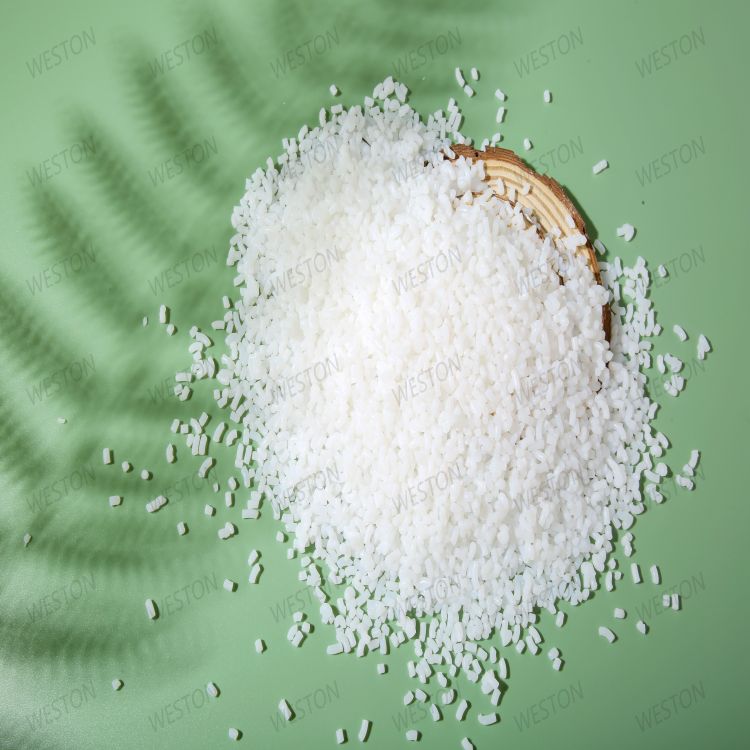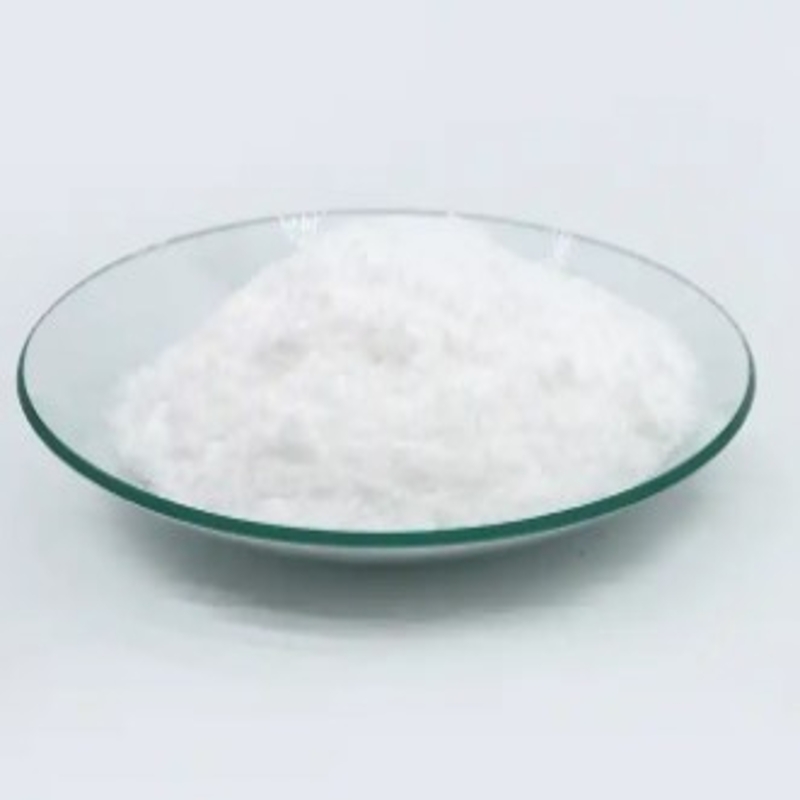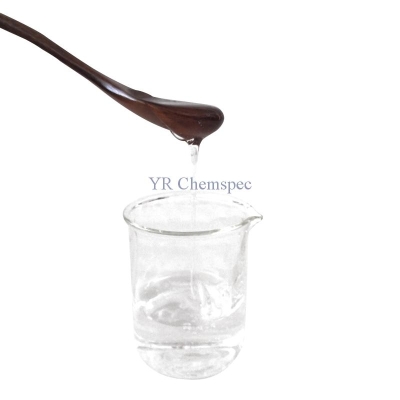-
Categories
-
Pharmaceutical Intermediates
-
Active Pharmaceutical Ingredients
-
Food Additives
- Industrial Coatings
- Agrochemicals
- Dyes and Pigments
- Surfactant
- Flavors and Fragrances
- Chemical Reagents
- Catalyst and Auxiliary
- Natural Products
- Inorganic Chemistry
-
Organic Chemistry
-
Biochemical Engineering
- Analytical Chemistry
- Cosmetic Ingredient
-
Pharmaceutical Intermediates
Promotion
ECHEMI Mall
Wholesale
Weekly Price
Exhibition
News
-
Trade Service
The hydrogen bonding, ion hydration, ion association, cluster structure, etc.
of the fluid microstructure in the subcritical state have changed, giving subcritical water special application properties
in many aspects.
In today's increasingly concerned about environmental protection and energy saving, subcritical water extraction technology is receiving more and more attention due to its non-toxic, economical, mild reaction conditions and simple waste liquid treatment, which highlights many advantages and broad application prospects compared with commonly used extraction methods
.
First, the advantages of subcritical water extraction are prominent
Water is the most abundant substance
on the earth's surface.
When the pressure and temperature are close to the critical point (Tc=374 °C, Pc=22.
1MPa), the characteristics of liquid phase water and vapor phase water gradually approach until the critical point
is reached or exceeded.
In the temperature range from 100 °C to a critical temperature of 374 °C, water can be kept liquid by applying pressure, and such water is called subcritical water
.
The reason why subcritical water has attracted the attention of researchers is mainly due to its special physicochemical properties and the applications
derived from these properties.
Subcritical water extraction is one of
the promising application directions.
By changing the temperature and pressure, the polarity of water changes in a large range, so that water can have good solubility
for medium polar or even non-polar components in a wide range.
The subcritical state can not only reduce the dielectric constant of water, so that water can dissolve organic solutes, but also enhance the diffusion effect, improve the kinetic properties, and reduce the surface tension and viscosity
.
Subcritical water extraction is regarded as a green extraction technology
because it uses inexpensive, pollution-free water as an extractant.
Compared with common extraction methods, such as solvent method (SOX), steam distillation (SE), supercritical fluid extraction method (SFE), ultrasonic extraction (USE), accelerated solvent extraction (ASE), etc.
, in addition to environmental protection, it also has the advantages of short extraction time and good selectivity, through the control of extraction conditions can extract substances of different polarities, good reproducibility, extraction device and operation are simple, extraction conditions are not harsh, detection limit is low, high sensitivity and other advantages
.
See Table 1
for details.
The effect of subcritical water extraction is mainly affected by the following factors:
First, temperature
.
By adjusting the temperature, the water gradually changes from strong polarity to non-polarity, and the solute can be extracted from high to low polarity
.
In the subcritical water extraction process, the extraction rate generally increases with the increase of temperature, in order to maximize the extraction efficiency, the extraction should theoretically be carried out
at a higher temperature.
But this is not the case, too high a temperature will lead to the degradation of some components, which will reduce the extraction rate
.
Therefore, the extraction temperature should be selected
according to different raw materials and extracts.
The second is pressure
.
The role of extraction pressure in the subcritical water extraction process is relatively small, and due to the low compressibility of water in a certain temperature range, pressure has little
effect on the dielectric constant.
Therefore, only the appropriate pressure (generally in 1~6MPa) to keep the subcritical water in a pressure state
.
The third is the extraction time
.
Generally within
1h.
In addition to this, the extraction rate
can be improved by controlling the pH value.
In some cases, when the extraction capacity of subcritical water is insufficient, the extraction efficiency can be improved by adding organic solvents, and the extraction temperature can be reduced and the extraction time
can be shortened.
|
Project/methodology
|
SWE
|
SFE
|
ASE
|
SOX
|
USE
|
SE
|
|
Organic solvent dosage (ml)
|
not
|
not
|
15-45
|
Hundreds
|
Hundreds
|
not
|
|
Sample volume
|
1-30
|
1-30
|
1-30
|
10-30
|
30
|
1-30
|
|
Extraction time
|
5-15min
|
1h
|
10-15min
|
24h
|
5-10min
|
A few hours
|
|
Temperature(°C)
|
30-300
|
35-90
|
30-200
|
Higher boiling point than organic solvents
|
Above normal temperature
|
100
|
|
pressure
|
1-6MPa
|
7.
7-42. 5 MPa |
1-2 MPa
|
Atmospheric
|
Atmospheric
|
Atmospheric
|
|
efficiency
|
high
|
high
|
Higher
|
low
|
Slightly higher
|
low
|
|
Sample morphology
|
Solid, semi-solid
|
Solid, semi-solid
|
Solid, semi-solid
|
Solid, semi-solid
|
Solid, semi-solid
|
Solid, semi-solid
|
|
Type of analyte
|
Medium polar and non-polar organics
|
Non-polar components with a molecular weight of less than 500
|
Non-volatile
|
Non-polar compounds with high boiling points
|
Non-polar compounds with high boiling points
|
Non-polar components below 100°C
|
|
Instrumentation
|
Simple
|
complex
|
Simpler static extraction
|
Simple
|
Simple
|
Simple
|
|
Online co-use
|
OK
|
OK
|
OK
|
OK
|
OK
|
OK
|
|
Influencing factors
|
temperature
|
Temperature, pressure, time, flow rate
|
Temperature, pressure, solvent volume
|
Time, temperature, solvent, pre-heating or pre-concentration
|
Time, solvent,
|
temperature
|
Project/methodology
SWE
SFE
ASE
SOX
USE
SE
Organic solvent dosage (ml)
not
not
15-45
Hundreds
Hundreds
not
Sample volume
1-30
1-30
1-30
10-30
30
1-30
Extraction time
5-15min
1h
10-15min
24h
5-10min
A few hours
Temperature(°C)
30-300
35-90
30-200
Higher boiling point than organic solvents
Above normal temperature
100
pressure
1-6MPa
7.
7-42.
5 MPa
7-42.
5 MPa
1-2 MPa
Atmospheric
Atmospheric
Atmospheric
efficiency
high
high
Higher
low
Slightly higher
low
Sample morphology
Solid, semi-solid
Solid, semi-solid
Solid, semi-solid
Solid, semi-solid
Solid, semi-solid
Solid, semi-solid
Type of analyte
Medium polar and non-polar organics
Non-polar components with a molecular weight of less than 500
Non-volatile
Non-polar compounds with high boiling points
Non-polar compounds with high boiling points
Non-polar components below 100°C
Instrumentation
Simple
complex
Simpler static extraction
Simple
Simple
Simple
Online co-use
OK
OK
OK
OK
OK
OK
Influencing factors
temperature
Temperature, pressure, time, flow rate
Temperature, pressure, solvent volume
Time, temperature, solvent, pre-heating or pre-concentration
Time, solvent,
temperature
Project/methodology
SWE
SFE
ASE
SOX
USE
SE
Project/methodology
Project/methodology
Project/methodology
SWE
SWE
SWE
SFE
SFE
SFE
ASE
ASE
ASE
SOX
SOX
SOX
USE
USE
USE
SE
SE
SE
Organic solvent dosage (ml)
not
not
15-45
Hundreds
Hundreds
not
Organic solvent dosage (ml)
Organic solvent dosage (ml)
Organic solvent dosage (ml)
not
not
not
not
not
not
15-45
15-45
15-45
Hundreds
Hundreds
Hundreds
Hundreds
Hundreds
Hundreds
not
not
not
Sample volume
1-30
1-30
1-30
10-30
30
1-30
Sample volume
Sample volume
Sample volume
1-30
1-30
1-30
1-30
1-30
1-30
1-30
1-30
1-30
10-30
10-30
10-30
30
30
30
1-30
1-30
1-30
Extraction time
5-15min
1h
10-15min
24h
5-10min
A few hours
Extraction time
Extraction time
Extraction time
5-15min
5-15min
5-15min
1h
1h
1h
10-15min
10-15min
10-15min
24h
24h
24h
5-10min
5-10min
5-10min
A few hours
A few hours
A few hours
Temperature(°C)
30-300
35-90
30-200
Higher boiling point than organic solvents
Above normal temperature
100
Temperature(°C)
Temperature(°C)
Temperature(°C)
30-300
30-300
30-300
35-90
35-90
35-90
30-200
30-200
30-200
Higher boiling point than organic solvents
Higher boiling point than organic solvents
Higher boiling point than organic solvents
Above normal temperature
Above normal temperature
Above normal temperature
100
100
100
pressure
1-6MPa
7.
7-42.
5 MPa
7-42.
5 MPa
1-2 MPa
Atmospheric
Atmospheric
Atmospheric
pressure
pressure
pressure
1-6MPa
1-6MPa
1-6MPa
7.
7-42.
5 MPa
7-42.
5 MPa
7.
7-42.
5 MPa
7. 7-42.
5 MPa
7-42.
5 MPa
1-2 MPa
1-2 MPa
1-2 MPa
Atmospheric
Atmospheric
Atmospheric
Atmospheric
Atmospheric
Atmospheric
Atmospheric
Atmospheric
Atmospheric
efficiency
high
high
Higher
low
Slightly higher
low
efficiency
efficiency
efficiency
high
high
high
high
high
high
Higher
Higher
Higher
low
low
low
Slightly higher
Slightly higher
Slightly higher
low
low
low
Sample morphology
Solid, semi-solid
Solid, semi-solid
Solid, semi-solid
Solid, semi-solid
Solid, semi-solid
Solid, semi-solid
Sample morphology
Sample morphology
Sample morphology
Solid, semi-solid
Solid, semi-solid
Solid, semi-solid
Solid, semi-solid
Solid, semi-solid
Solid, semi-solid
Solid, semi-solid
Solid, semi-solid
Solid, semi-solid
Solid, semi-solid
Solid, semi-solid
Solid, semi-solid
Solid, semi-solid
Solid, semi-solid
Solid, semi-solid
Solid, semi-solid
Solid, semi-solid
Solid, semi-solid
Type of analyte
Medium polar and non-polar organics
Non-polar components with a molecular weight of less than 500
Non-volatile
Non-polar compounds with high boiling points
Non-polar compounds with high boiling points
Non-polar components below 100°C
Type of analyte
Type of analyte
Type of analyte
Medium polar and non-polar organics
Medium polar and non-polar organics
Medium polar and non-polar organics
Non-polar components with a molecular weight of less than 500
Non-polar components with a molecular weight of less than 500
Non-polar components with a molecular weight of less than 500
Non-volatile
Non-volatile
Non-volatile
Non-polar compounds with high boiling points
Non-polar compounds with high boiling points
Non-polar compounds with high boiling points
Non-polar compounds with high boiling points
Non-polar compounds with high boiling points
Non-polar compounds with high boiling points
Non-polar components below 100°C
Non-polar components below 100°C
Non-polar components below 100°C
Instrumentation
Simple
complex
Simpler static extraction
Simple
Simple
Simple
Instrumentation
Instrumentation
Instrumentation
Simple
Simple
Simple
complex
complex
complex
Simpler static extraction
Simpler static extraction
Simpler static extraction
Simple
Simple
Simple
Simple
Simple
Simple
Simple
Simple
Simple
Online co-use
OK
OK
OK
OK
OK
OK
Online co-use
Online co-use
Online co-use
OK
OK
OK
OK
OK
OK
OK
OK
OK
OK
OK
OK
OK
OK
OK
OK
OK
OK
Influencing factors
temperature
Temperature, pressure, time, flow rate
Temperature, pressure, solvent volume
Time, temperature, solvent, pre-heating or pre-concentration
Time, solvent,
temperature
Influencing factors
Influencing factors
Influencing factors
temperature
temperature
temperature
Temperature, pressure, time, flow rate
Temperature, pressure, time, flow rate
Temperature, pressure, time, flow rate
Temperature, pressure, solvent volume
Temperature, pressure, solvent volume
Temperature, pressure, solvent volume
Time, temperature, solvent, pre-heating or pre-concentration
Time, temperature, solvent, pre-heating or pre-concentration
Time, temperature, solvent, pre-heating or pre-concentration
Time, solvent,
Time, solvent,
Time, solvent,
temperature
temperature
temperature
Second, the application prospect is broad
A large number of experiments have shown that subcritical water extraction has great application potential
in extracting active ingredients from plants.
Plant phenols are an important part of natural products, including plant tannins, flavonoids, lignin and some simple phenols
.
At present, a large number of literature at home and abroad have reported the extraction, separation and utilization of
plant phenols.
Buderat et al.
used subcritical water to extract polyphenolic compounds in bitter melon, and the results showed that under the conditions of temperature 150~200 °C, pressure 10MPa, and flow rate of 2mL/min, the mass fraction of total polyphenols in the extract was 52.
63mg/g, which was much higher than that extracted by methanol6.
OOmg/g and 6.
68mg/g
extracted by boiling water reflux.
In terms of essential oil extraction, the application prospects of subcritical water extraction technology are also promising
.
Essential oils contain a variety of active ingredients and are widely used
in pharmaceutical, food, tobacco, cosmetics and other industries.
Traditional essential oil extraction methods, such as steam distillation and organic solvent extraction, will cause problems such as the destruction of essential oil components due to extraction solvent residue and excessive extraction time, which seriously affects the quality of
essential oils.
When relevant personnel studied the application potential of subcritical water extraction technology in plant essential oil extraction, by examining the subcritical water extraction technology in rosemary, cloves, oregano leaves, fennel, laurel, peppermint, calamus, sand kernels, dried peppercorns, onions and other plant extract essential oils, it was found that subcritical water extraction essential oils had high sulfide content, and saved time, energy, efficiency and high quality
.
In addition to the application of plant extracts, subcritical extraction technology also has a good application prospect
in food safety detection.
Food safety testing has the following characteristics: there are many types of samples, including grain, vegetables, fruits, meat, eggs, milk, aquatic products and their processed foods, and the matrix of these samples is different and complex; There are many types and quantities of ingredients to be detected, including organic synthetic pesticides, veterinary drug residues and pollutants, toxic and harmful trace elements, pathogenic bacteria, etc.
; Large sample volumes, wide sample distribution, low analyte content, and the need for fast, easy testing
.
At present, there have been reports
at home and abroad that subcritical water extraction technology has been applied to pesticide residues in grain, fruits, vegetables and meat products.
The results show that the subcritical water extraction method has the characteristics of
rapid, convenient, accurate and no organic solvent residue.
Since the application research of subcritical water extraction technology in the field of plant extraction is still in its infancy, most of them belong to laboratory research, so there are still problems
in engineering equipment, process flow and operation technology in industrial production.
However, as a green extraction technology, subcritical water extraction will receive more attention and application due to its significant advantages, creating more value
for society.







